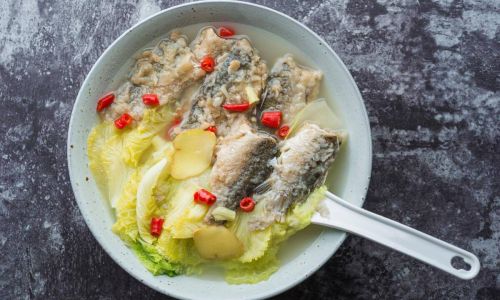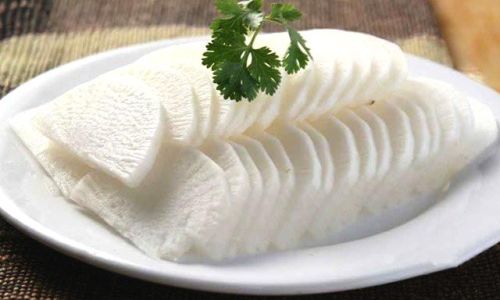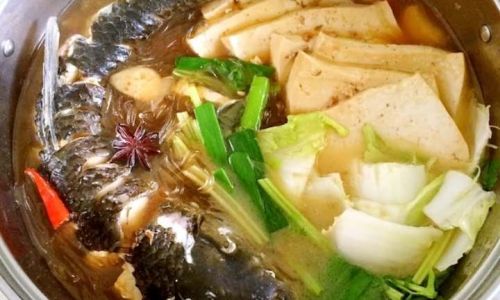White radish stewed fish, a dish that marries the delicate sweetness of fish with the earthy crispness of white radish, is a beloved staple in many cuisines. Often hailed for its comforting flavors and nutritional benefits, this dish requires a balance of precision and creativity to achieve perfection. Whether you’re a seasoned home cook or a novice in the kitchen, mastering this recipe hinges on understanding the interplay of ingredients, techniques, and timing. This article delves into the nuances of crafting a memorable white radish stewed fish, from selecting the finest components to executing the final plating with finesse.
The Foundation: Ingredients and Their Roles
At the heart of every great dish lies the quality of its ingredients. For white radish stewed fish, freshness is non-negotiable. The star of the show is the fish—typically a white-fleshed variety like sea bass, snapper, or cod. These fish offer a mild, buttery flavor that complements the radish without overpowering it. When selecting fish, look for firm flesh, clear eyes, and a fresh, oceanic scent. Avoid fillets with a strong fishy odor or discolored edges, as these indicate spoilage.

The white radish, known as daikon in Japanese or lo bak in Cantonese, serves as the dish’s structural and flavorful backbone. Choose a radish that feels heavy for its size, with smooth, unblemished skin and vibrant green leaves (if attached). The radish’s crisp texture and subtle peppery notes soften during cooking, melting into the broth and infusing it with a hint of sweetness.
Aromatics such as ginger, garlic, and scallions elevate the dish’s complexity. Fresh ginger, sliced or julienned, adds warmth and helps neutralize any lingering fishiness. Garlic, minced or crushed, imparts a savory depth, while scallions contribute a fresh, grassy finish. Additional ingredients like Shaoxing wine, light soy sauce, and white pepper round out the flavor profile, enhancing the dish’s umami without overwhelming its subtlety.
Preparation: The Key to Flavor Harmony
Before igniting the stove, meticulous preparation ensures each ingredient contributes its best to the final dish. Begin by cleaning the fish thoroughly. Remove scales, guts, and gills, then rinse under cold water. Pat the fish dry with paper towels to prevent splattering during cooking. Some chefs opt to marinate the fish briefly in a mixture of soy sauce, rice wine, and cornstarch to tenderize the flesh and lock in moisture. However, over-marinating can compromise the fish’s texture, so limit this step to 15–20 minutes.
Next, prepare the white radish. Peel the skin using a vegetable peeler or knife, then slice it into thick, even rounds or half-moons. Uniformity in thickness ensures even cooking. For added visual appeal, consider cutting the radish into decorative shapes, such as flowers or oblique chunks. Soak the sliced radish in cold water to prevent browning and remove excess bitterness, though this step is optional.

Aromatics require minimal effort but demand attention to detail. Peel and slice ginger into thin strips, then smash garlic cloves gently to release their oils. Chop scallions into 2-inch segments, separating the white and green parts for layered cooking.
Cooking Techniques: From Searing to Simmering
The cooking process for white radish stewed fish unfolds in three distinct phases: searing, simmering, and finishing. Each stage serves a critical purpose in building flavor and texture.
Searing the Fish
Heat a wok or deep skillet over medium-high heat, then add a neutral oil like vegetable or canola. Once the oil shimmers, carefully place the fish in the pan, skin-side down. Allow it to sear undisturbed for 3–4 minutes until the skin turns golden and crispy. Flip the fish gently using a spatula and cook for another 2 minutes. Searing creates a Maillard reaction, deepening the dish’s savory notes and preventing the fish from falling apart during simmering.
Simmering with Aromatics
Remove the fish from the pan and set aside. In the same pan, add a touch more oil if needed, then toss in the ginger and garlic. Sauté until fragrant (30–45 seconds), taking care not to burn them. Drain the radish slices and add them to the pan, stirring to coat with the aromatic oil. Deglaze the pan with Shaoxing wine, scraping up any browned bits from the bottom. This step introduces acidity and complexity to the broth.

Return the fish to the pan, nestling it among the radish slices. Pour in enough chicken or fish stock to submerge the ingredients halfway—approximately 2–3 cups, depending on the pan’s size. Bring the liquid to a gentle simmer, then reduce the heat to low. Cover the pan and let the stew cook for 15–20 minutes. The radish will soften, and the fish will absorb the flavors of the broth.
Finishing Touches
Once the radish is tender and the fish is cooked through (opaque flesh that flakes easily), season the broth with light soy sauce, white pepper, and a pinch of sugar to balance the flavors. Adjust the seasoning to taste, then add the scallion greens. For a luxurious touch, drizzle a teaspoon of sesame oil over the dish just before serving.
Troubleshooting Common Pitfalls
Even with careful preparation, challenges may arise. Here’s how to address them:
- Mushy Radish: Overcooking causes the radish to lose its structure. Test for doneness by piercing a slice with a fork—it should yield slightly but retain shape.
- Fishy Aftertaste: Ensure the fish is fresh and properly cleaned. Adding ginger and Shaoxing wine during cooking helps mitigate any undesirable odors.
- Bland Broth: Balance the flavors with incremental additions of soy sauce, pepper, or a splash of vinegar. Avoid oversalting, as the broth will reduce and concentrate.
- Broken Fish: Searing the fish properly creates a protective crust. Handle the fish gently when flipping and simmering.
Variations and Creative Adaptations
While the classic recipe is timeless, experimentation can yield exciting results. Consider these variations:

- Spicy Kick: Add sliced chili peppers or a dollop of chili oil during simmering.
- Umami Boost: Incorporate dried shiitake mushrooms or a tablespoon of fermented bean paste.
- Vegetarian Twist: Substitute the fish with firm tofu and vegetable stock, creating a hearty stew that retains the dish’s essence.
- Herb Infusion: Garnish with fresh cilantro, basil, or dill for a vibrant aroma.
Pairing and Presentation
White radish stewed fish shines when paired with steamed jasmine rice, which soaks up the flavorful broth. For a complete meal, serve it alongside stir-fried greens or a crisp cucumber salad. Presentation matters too: arrange the fish and radish slices artfully in a shallow bowl, then ladle the broth over them. Sprinkle with additional scallions or sesame seeds for a pop of color.
The Cultural Tapestry of White Radish Stewed Fish
Beyond its culinary appeal, this dish carries cultural significance. In Chinese households, it symbolizes prosperity and harmony, often served during festive occasions. The radish’s white hue represents purity, while the fish symbolizes abundance—a nod to the dish’s role in celebratory feasts. Similarly, in Japanese cuisine, daikon is revered for its medicinal properties, and stewed dishes like oden showcase its versatility.
Conclusion: The Journey to Mastery
Crafting the perfect white radish stewed fish is an exercise in patience and intuition. It rewards the cook with a dish that is both nourishing and deeply satisfying. By prioritizing fresh ingredients, mastering cooking techniques, and embracing creativity, you can transform simple components into a culinary masterpiece. Whether enjoyed on a quiet weeknight or shared with loved ones, this stew embodies the joy of cooking—a harmony of flavors, textures, and traditions. So, the next time you stand in your kitchen, let the sizzle of ginger, the aroma of simmering broth, and the tender flake of fish guide you toward a meal that transcends the ordinary.





0 comments